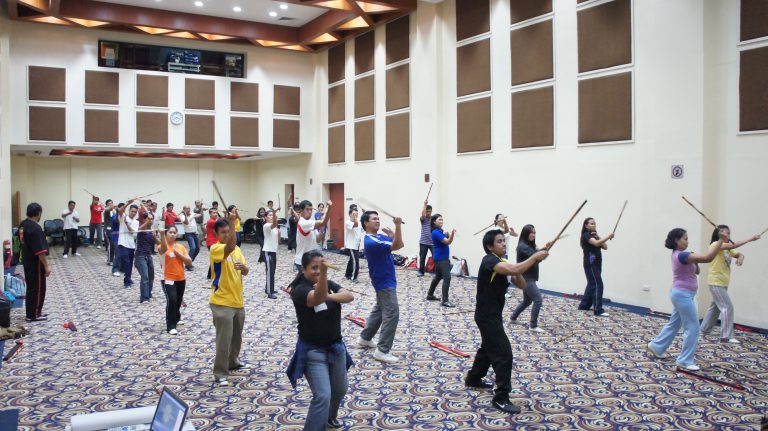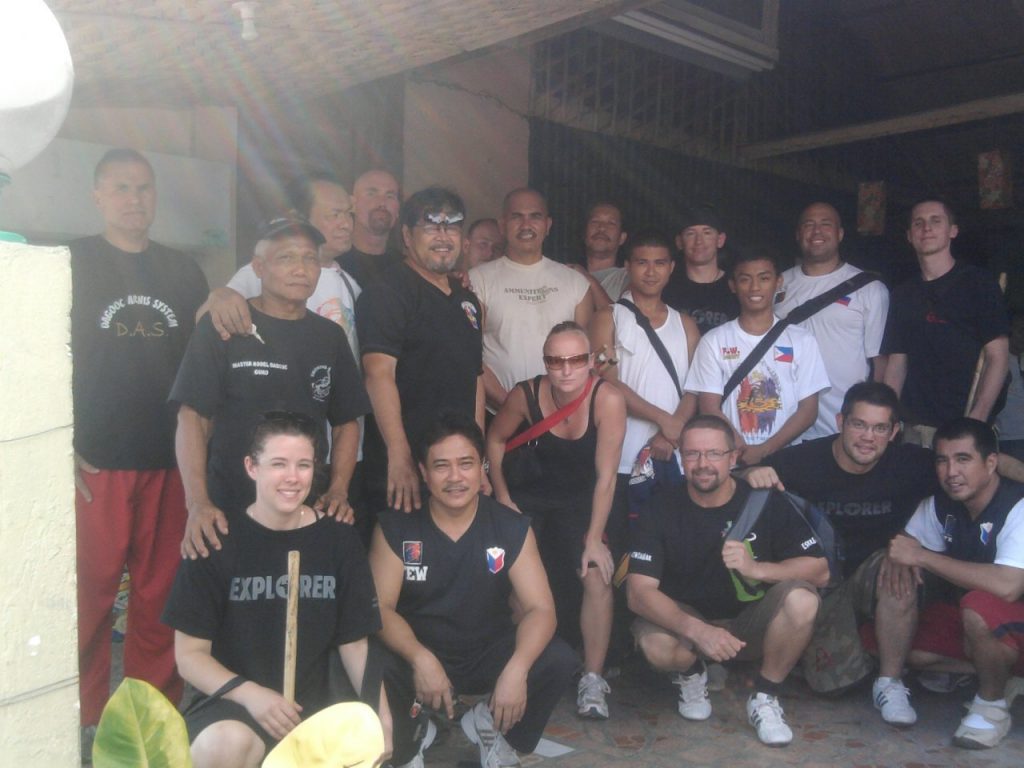 Pinoy martial art begins with the weapon training using wooden sticks.
Pinoy martial art begins with the weapon training using wooden sticks.
You watch a Jackie Chan flick, and you laugh while simultaneously being amazed by his high-flying, death-defying nimble moves. You get into more kung fu movies after that, dreaming at the same time of becoming a martial artist someday. Then you found out about Bruce Lee, and the deeper you get to appreciate this ancient art. The discipline, the philosophy, and the power that come with martial arts fascinate you no end.
The next thing you thought of doing was getting formal training. You choose from countless martial arts available in the “market,” deciding whether it’s going to be Wushu or Taekwondo or Muay Thai or Judo or Karate, and the list goes on and on and on. In the middle of all this you start to wonder, “Is there no martial art that is originally Filipino?”
There is.
Thanks to Republic Act 9850, more commonly known as An Act Declaring Arnis as the National Martial Art and Sport of the Philippines, our country finally recognized an official fighting style that is truly Pinoy.
Filipino Elusive Warriors
 And one group is working doubly hard to promote not just Arnis, but Filipino Martial Art (FMA) here in the Philippines and in the whole world: the Filipino Elusive Warriors (FEW).
And one group is working doubly hard to promote not just Arnis, but Filipino Martial Art (FMA) here in the Philippines and in the whole world: the Filipino Elusive Warriors (FEW).
Starting out as Pilipino Dulasang Mandirigma in 1983, this group of martial artists headed by Pangulong Guro Tino Ceberano dreamed of developing and promoting FMA in order to highlight the Filipino culture, strengthen both body and soul, preserve our heritage, and bring to the forefront of the martial arts world our very own sport.
He also dreams of including FMA in the school curriculum as part of the Physical Education subject. Furthermore, the FEW envisions the country to finally have its own formal training ground or school for FMA, like dojos in Japan or shaolin temples in ancient China, where professional mandirigma or martial artists can train future generations in this discipline.
Martial Arts Equality
To those who doubt the efficacy of this home-grown martial art, Ceberano has this to say, “There is no such thing as one style better than the other.”
He narrated how Americans, in the late 1800s, noticed the fighting style of those Filipinos who fought in the war with just a bolo. The grace of the movement, the strength of the attack, and the fierceness of the warriors proved to be a beautiful but lethal combination even for the colonizers.
“It’s not the style but the man,” Ceberano adds.
Bruce Lee, although long gone in this world, still has wisdom that perfectly jibes with Ceberano’s philosophy. The legendary martial artist once said, “To me, the extraordinary aspect of martial arts lies in its simplicity. The easy way is also the right way, and martial art is nothing at all special; the closer to the true way of martial arts, the less wastage of expression there is.”
Weapons Training
One of the big differences of FMA as compared with others is its “holistic approach.” Training starts with the use of a weapon, most commonly the Kali sticks. This will be done together with proper footwork, which is vital in making quick and powerful motions for the attack or defense. Once the martial artist becomes fairly grounded with his weapon of choice, that’s when he begins to learn fighting empty-handed.
Ceberano explains that getting used to handling a weapon will give the warrior’s hands, eyes, and feet some familiarization with the basic stance and movements of FMA. Once you learn how to fight with a weapon, it will now be easier to learn how to do the same thing with your bare hands.
Of course, practice makes perfect.
“Use a lot of brain first before brawn,” Ceberano insists, adding that martial arts should be used for the good of mankind. There is a “code of respect and courtesy” that is present in any form of martial arts that any serious artist should abide by. Likewise, FMA should teach a baguhan how to protect the weak and nurture the health of the body and the spirit.
This article is reprinted from http://balikbayanmag.com and was written by Steno A. Padilla April 2012.
